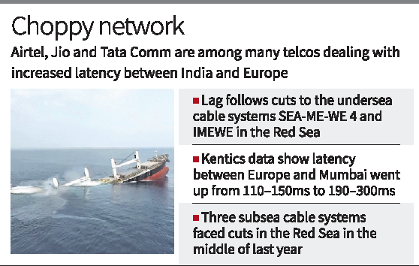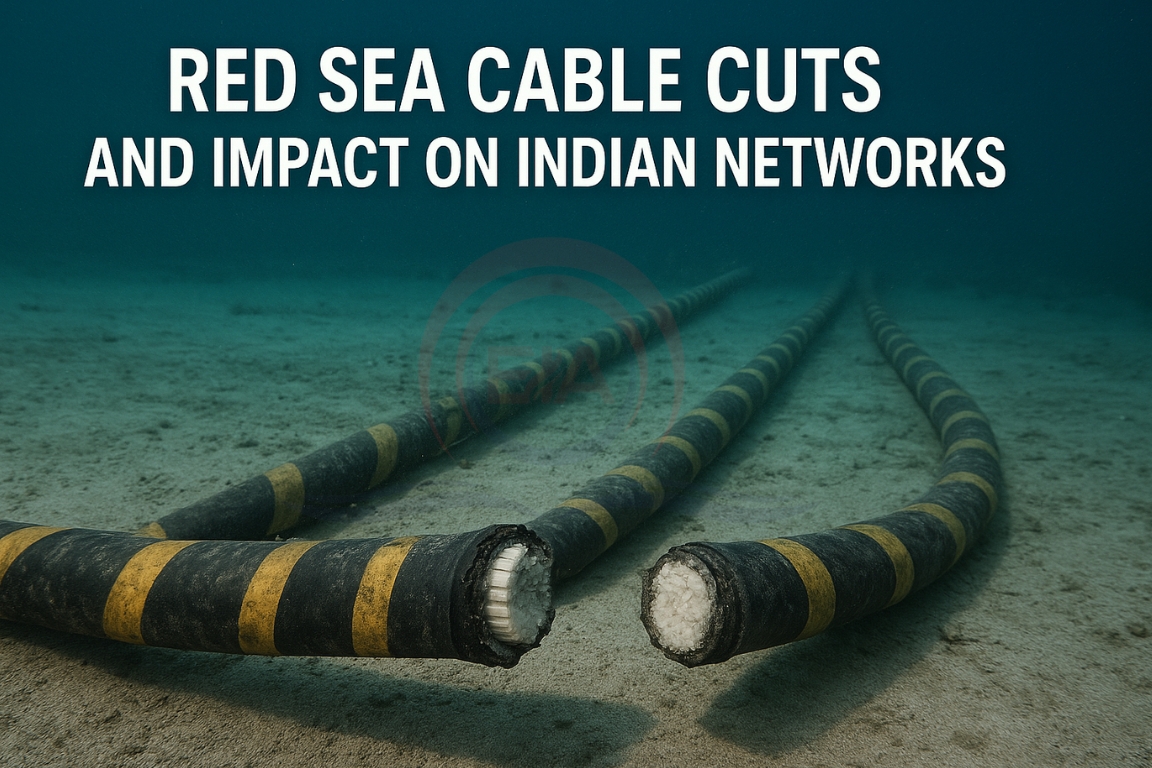Recently, cuts in undersea cables in the Red Sea slowed India–Europe internet traffic by increasing latency, though major outages were avoided through alternate routes.
What are Undersea Cables?
- Fiber-optic cables laid on the seabed, carrying ~99% of international internet traffic.
- Form the global internet backbone, connecting continents for data transfer.
- Provide fast, high-capacity, and reliable communication compared to satellites.

About SEA-ME-WE 4 and IMEWE Cables
- Current Issue: Red Sea Cable Cuts: Cables in the Red Sea have been cut amid regional tensions, including Houthi-linked incidents.
- SEA-ME-WE 4 (South-East Asia–Middle East–Western Europe 4): Connects Southeast Asia to Europe via India, West Asia, and Egypt. Lands in Chennai and Mumbai in India.
- IMEWE (India–Middle East–Western Europe): A high-capacity cable linking India (Mumbai) with West Asia and Europe. Operated by a consortium including Bharti Airtel and Tata Communications.
Impact on India:
- Latency between Mumbai and Europe rose from ~110–150 ms to ~190–300 ms.
- Airtel, Jio, and Tata Communications networks were affected.
- Video calls, cloud services, and streaming experienced noticeable slowdowns.
- Mitigation: India has over 12 subsea cable systems, allowing telecoms to reroute traffic through alternate but less efficient paths.
Strategic Concerns
- Recurring Problem: This is the second disruption in the Red Sea in two years, raising concerns over security of global internet infrastructure.
- Geopolitical Angle: Red Sea is a crucial chokepoint for digital connectivity in addition to oil and trade routes.
India’s Challenge:
- Heavy reliance on a few critical cables.
- Need to diversify routes and invest in redundant, secure infrastructure.
Way Forward
- Strengthen regional cooperation for undersea cable protection.
- Encourage investment in alternate cable routes via Africa and Central Asia.
- Enhance cyber and physical security frameworks for critical internet infrastructure.
Conclusion:
The Red Sea cable cuts highlight India’s vulnerability in digital connectivity. While immediate disruptions were controlled, long-term resilience needs stronger infrastructure and diversified routes.





